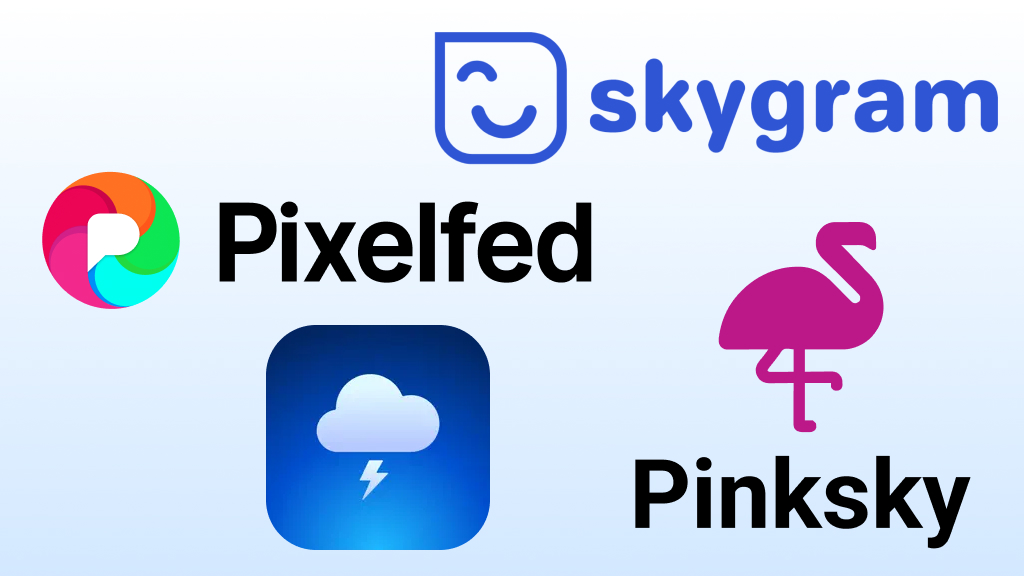
For years, Instagram has been the go-to platform for sharing photos, building communities, and discovering creative content. But as the platform increasingly prioritizes ad revenue and algorithm-driven feeds, many users are growing frustrated with the lack of control, intrusive data practices, and the constant pressure to “perform” for engagement.
In response to these concerns, a new wave of decentralized platforms built on open protocols is quietly transforming the social media landscape. These platforms offer a refreshing alternative to mainstream apps, giving users true ownership of their content, enhanced privacy, and the freedom to interact across interconnected networks without being locked into a single platform.
Open protocols, like ActivityPub and the AT Protocol, power these next-generation social apps, allowing them to communicate with each other in ways that traditional platforms can’t.
Defining Open Protocols

An open protocol is a publicly available set of rules that allows different apps or services to communicate with each other. In the context of social media, open protocols enable platforms to be interoperable, meaning users on one app can interact with users on another, without being confined to a single ecosystem.
Think of it like email where you can send a message from Gmail to Outlook or Yahoo because they all use the same underlying protocols. Open social media works the same way, breaking down the barriers between platforms and creating a more connected, user-centric experience.
Key Open Protocols Powering Social Media

-
ActivityPub
The backbone of the Fediverse, ActivityPub allows users to follow and interact across different apps.
-
AT Protocol
The AT Protocol focuses on decentralized social networking with features like portable accounts and algorithmic choice.
-
Matrix
A protocol designed for real-time communication, often used for decentralized chat apps but with potential for social networking as well.
Why Open Protocols Matter?

-
Content Portability
Your profile, followers, and content don’t have to disappear if you leave a platform, you can take them with you to another compatible app.
-
User Autonomy
Instead of being subject to the whims of a single corporation, users can choose platforms (or even host their own) that align with their values.
-
Community Resilience
Decentralized networks built on open protocols are harder to shut down or censor, as they aren’t controlled by a single entity.
Open protocols are paving the way for a healthier, more user-empowered social web. Additionally, for creators tired of playing by Instagram’s rules, they give a preview of a more liberated and community-driven future.
Top Instagram Alternatives Using Open Protocols

Social media has revolutionized the way we share our lives, but platforms like Instagram come with limitations, algorithm-driven feeds, intrusive data collection, and limited content ownership. A new generation of platforms built on open protocols is emerging as a promising alternative.
By using protocols like ActivityPub and the AT Protocol, these platforms allow users to control their content, interact across apps, and even migrate their profiles if they decide to switch platforms. No more being locked into a single ecosystem or worrying about how an algorithm will treat your latest post.
Whether you’re a photographer, artist, or casual user seeking a more community-driven experience, these Instagram alternatives provide exciting possibilities for authentic connections and creative expression. In this article, we’ll explore the top platforms built on open protocols, their standout features, and why they might be the perfect place to share your next photo.
1. Skygram
Skygram is a web-based application designed to provide a photo-centric experience for users of Bluesky, a decentralized social media platform built on the AT Protocol. The app aims to cater to users who prefer visual content, offering an alternative to text-heavy or video-focused social networks.
Key Features of Skygram
- Photo-Centric Design
Skygram emphasizes photo sharing, making it appealing to users who prioritize visual content over other forms of interaction.
- Interest-Based Feeds
Users can explore curated feeds based on specific interests, such as Gardening or Dogs, allowing for more personalized content discovery.
- Integration with Bluesky
As a client for Bluesky, Skygram leverages the decentralized network while maintaining compatibility with its broader ecosystem.
- Open Source Development
Skygram’s code is available on GitHub, highlighting its commitment to transparency and community-driven improvements.
2. Pinksky
In the quest for decentralized social media alternatives, Pinksky emerges as a compelling option for users seeking an Instagram-like platform built on open protocols. Developed by Ramon Souza, Pinksky leverages the AT Protocol, the same foundation as Bluesky, to offer a seamless, photo-focused social networking experience.
Key Features of Pinksky
- Decentralized Framework
Operating on the AT Protocol, Pinksky ensures users have control over their data and interactions, aligning with the principles of decentralized social networking.
- Photo and Video Sharing
Users can share up to four photos per post and videos up to one minute in length, catering to visual storytellers and content creators.
- Stories Feature
Similar to Instagram, Pinksky offers a Stories feature, allowing users to share temporary content that disappears after 24 hours, fostering spontaneous and engaging interactions.
- Integration with Bluesky
As a third-party client for Bluesky, Pinksky enables users to log in with their Bluesky credentials, ensuring that posts and interactions are synchronized across both platforms.
- Cross-Platform Availability
Initially launched for iOS, Pinksky expanded its reach by releasing an Android version on February 11, 2025, making it accessible to a broader audience.
Why Choose Pinksky?
Pinksky is ideal for users seeking a decentralized alternative to traditional photo-sharing apps. By integrating with the Bluesky ecosystem, it offers a familiar yet innovative platform for visual content creators. Its commitment to user control, chronological content delivery, and seamless interoperability positions Pinksky as a compelling choice for those looking to move away from algorithm-driven platforms.
3. Flashes
In the evolving landscape of social media, Flashes emerges as a promising decentralized alternative to Instagram. Flashes leverages the AT Protocol, the same open-source foundation powering Bluesky, to offer users a photo-centric platform that prioritizes user control and interoperability.
Key Features of Flashes
- Decentralized Architecture
Built on the AT Protocol, Flashes operates within a decentralized framework, allowing users to retain control over their data and interactions.
- Photo and Video Sharing
Users can share up to four photos per post and videos up to one minute in length, catering to both photographers and videographers.
- Integration with Bluesky
As a Bluesky client, Flashes enables seamless interaction with the broader Bluesky ecosystem. Posts made on Flashes appear on Bluesky, and vice versa, fostering a cohesive user experience.
- Chronological Feed
Departing from algorithm-driven content curation, Flashes presents posts in chronological order, ensuring users see content as it’s shared.
- Beta Access via TestFlight
Currently in beta testing, Flashes is accessible through Apple’s TestFlight app, inviting early adopters to experience its features and contribute feedback.
Why Choose Flashes?
Flashes is ideal for users seeking a decentralized, user-first photo-sharing experience. By integrating with the Bluesky ecosystem, it offers a familiar yet innovative platform for visual content creators. Its commitment to user control, chronological content delivery, and seamless interoperability positions Flashes as a compelling alternative to traditional, centralized photo-sharing apps.
4. Pixelfed
If you’re looking for a decentralized, privacy-friendly alternative to Instagram, Pixelfed might be your perfect match. Built on the ActivityPub protocol, Pixelfed is a photo-sharing platform that gives users full control over their content, with features designed to feel familiar to Instagram users, but without the algorithmic pressure or data tracking.
Key Features of Pixelfed
- Decentralized Network
Pixelfed isn’t one giant platform but a collection of independent servers (called “instances”) that connect to the Fediverse, a network of platforms that can interact with each other. You can join an instance or even host your own.
- No Ads or Algorithms
Unlike Instagram, Pixelfed doesn’t manipulate your feed to boost engagement. You see posts in chronological order, so you never miss an update from the people you care about.
- Content Ownership
On Pixelfed, you own your content. The platform doesn’t claim any rights to your photos, and since it’s decentralized, there’s no single company profiting from your creativity.
- Familiar User Experience
Pixelfed offers many of the features Instagram users love, like photo filters, stories, and grid layouts, making the transition easy.
Why Choose Pixelfed?
Pixelfed is ideal for photographers, artists, and anyone who values digital privacy and creative freedom. It’s a great fit if you want a photo-sharing platform where content is shared organically. And because it’s built on an open protocol, if you ever want to move to another platform, you can take your account and followers with you.
While Pixelfed is still growing, its commitment to community-driven development and ethical social media practices makes it a powerful contender in the future of photo sharing. If you’re ready to leave behind the algorithmic chaos of Instagram and explore a more authentic way to connect, Pixelfed is worth checking out.
As social media evolves, users are increasingly seeking alternatives that prioritize privacy, content ownership, and authentic connections. The rise of decentralized platforms demonstrates a growing shift toward user-empowered digital spaces. These platforms break free from the restrictive models of traditional social networks, giving users control over their data, feeds, and online presence.
The era of decentralized social media is just beginning, and these platforms are paving the way for a more inclusive, flexible, and empowering digital world. If you’re ready to reclaim your social experience and be part of this transformative movement, exploring these Instagram alternatives might be the perfect next step.














